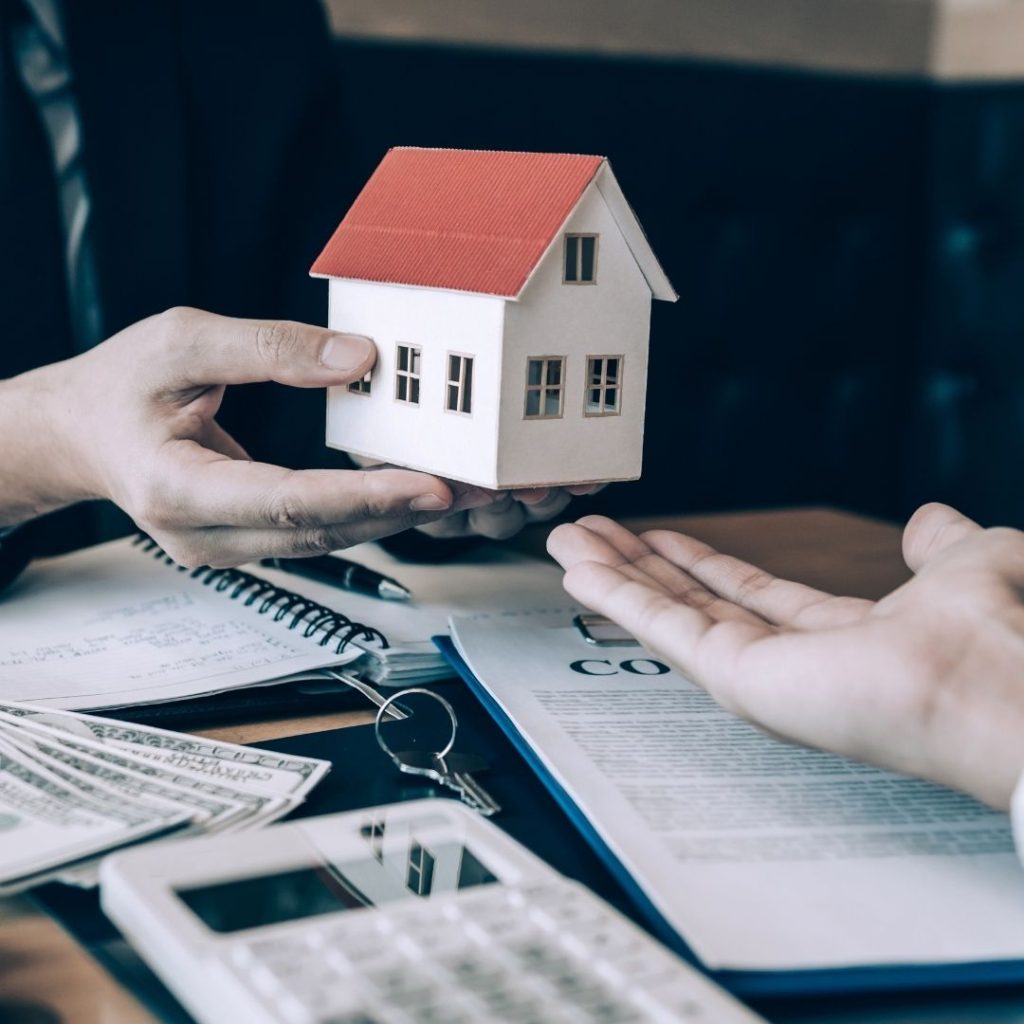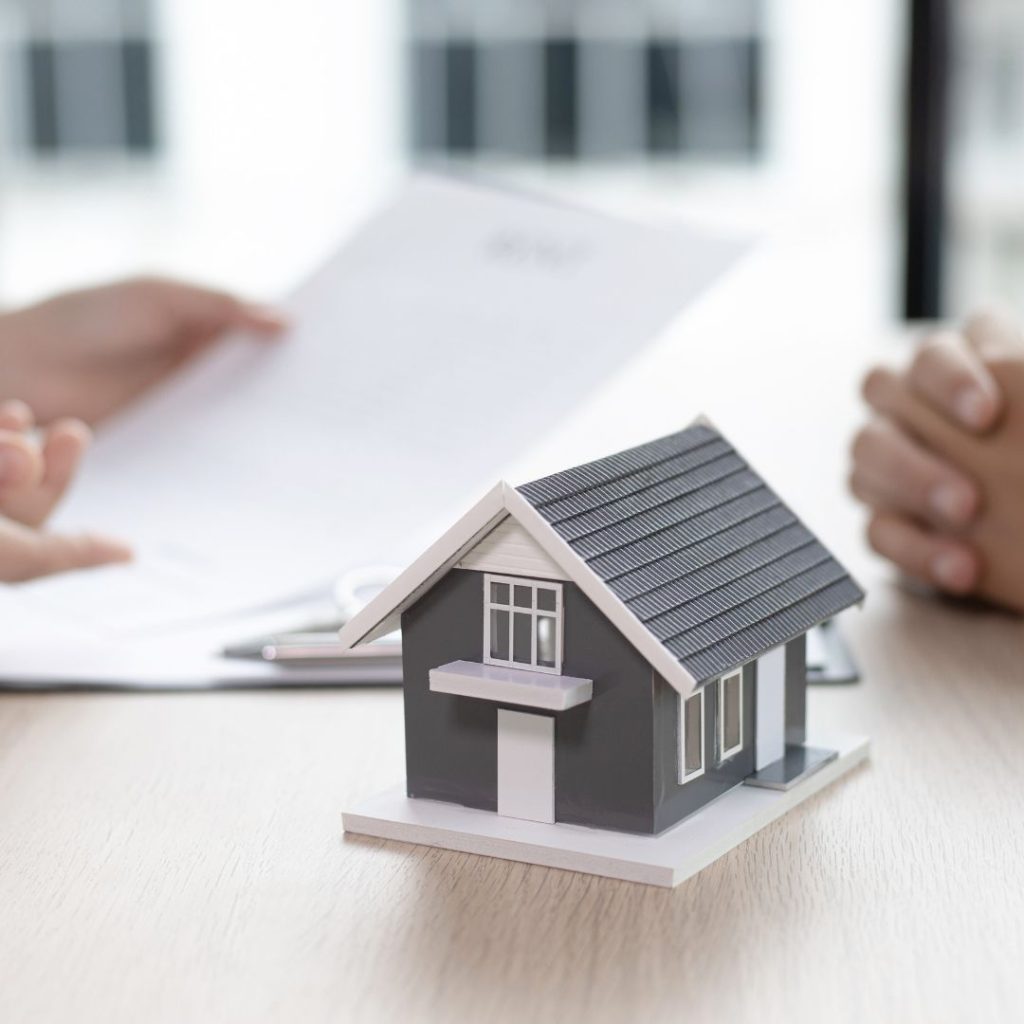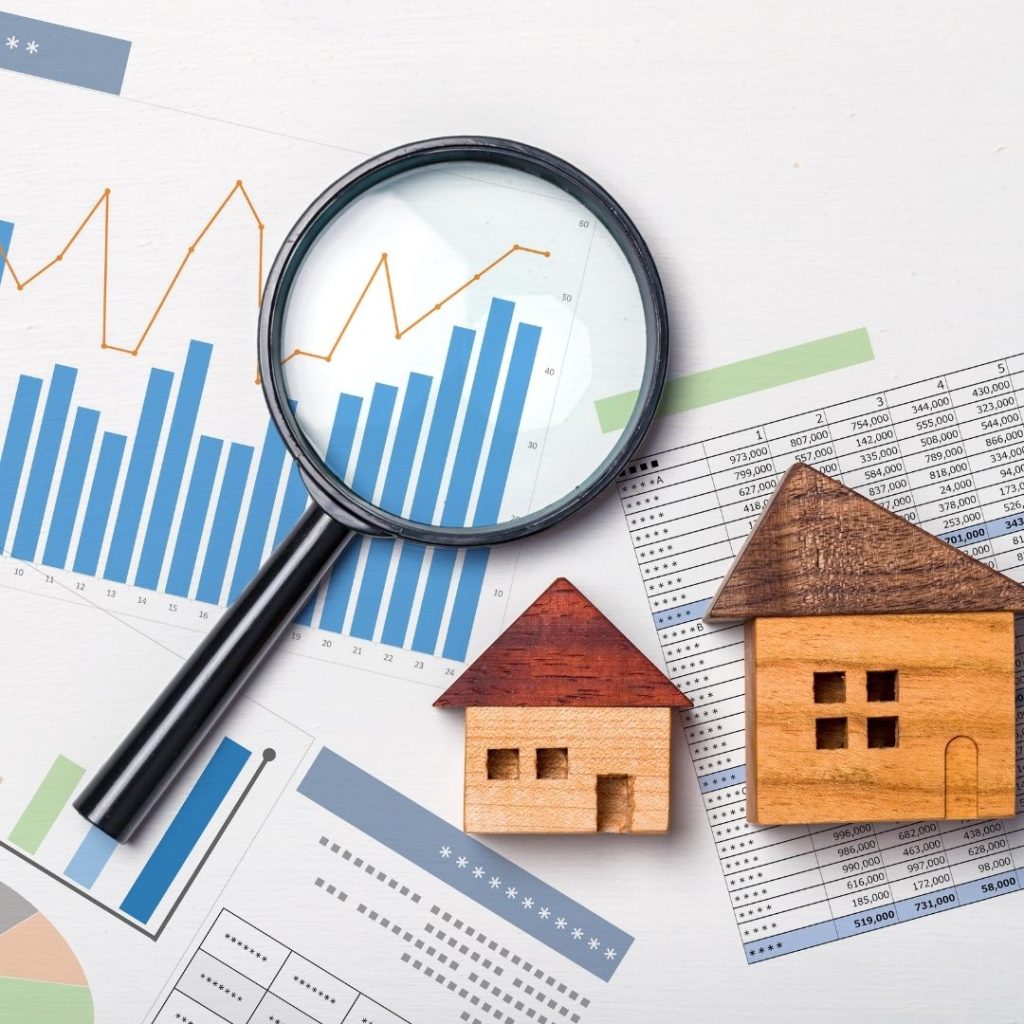How to Accumulate Property Fast?

How to buy a Property Portfolio?
February 9, 2022
How to use a 1031 Exchange to Scale your Real Estate Portfolio?
February 15, 2022In this article, we’ll discuss how to accumulate real estate fast. Investing in real estate and earning financial freedom is an important topic for many. In fact, the wealthiest people in the world attribute significant portions of their net worth to real estate.
While at first glance it may seem difficult and slow to build your wealth in real estate, that is not necessarily the case. There are actually many different ways to accumulate quickly and effectively, which is why in this article we will explore some of the most efficient methods. We will also discuss best practices on acquiring a lot of real estate so that you, as the real estate investor, can protect yourself legally and financially.

#1 – Buy a Real Estate Portfolio
For those looking to grow rapidly in real estate investing, buying a portfolio of properties is the best and quickest solution. A real estate portfolio is a collection of individual properties that are all owned by an individual person or company, that are being sold as a whole. Portfolios can take many forms. They can be a collection of gas stations, grocery stores, laundromats, and self-storage facilities. They can be a combination of each of these in the same state. They can be a combination of each of these spread across the country. Even more recently with the popularity of single-family home rentals, they can even be a group of single-family residences.
When purchasing a real estate portfolio the process is very similar to that of any other transaction. You’ll first of course start by defining your financial goals, and outlining your own target metrics. Specifically, what net income, rate of return, and cap rate that you desire to achieve with your new portfolio. What areas and real estate markets are you interested in investing in, and so on.
Once your goals are clear, you communicate these with the real estate broker of your choosing, who will help you search for the portfolio that best works for you using their network of relationships with sellers. They will then begin to send you offering memorandums for portfolios that come up for sale, which are documents outlining all the key financial and operational information on a property portfolio that is being held for sale. After reviewing these and making sure the quality of the assets, the type of assets, their age, location, financial performance, and future rental growth potential all align with your goals, you can then submit an offer to buy a portfolio, or a letter of intent.
A letter of intent is a simple 3 to 5-page document that outlines the basic terms and conditions of your offer to purchase a real estate portfolio. Submitting these as opposed to full-blown contracts saves you a lot of time and brings you closer to your goals much more quickly.
If your letter of intent is accepted, your real estate broker will then draft up a full purchase agreement, while you and the seller will sign and then, just as in any transaction the seller will provide you a slew of documents to contribute to your due diligence.
You will then need to apply for financing with a major bank or lender in order to secure a blanket mortgage, or a loan for the purchase of a portfolio of real estate properties. Once the bank receives your business documents, tax returns, bank statements, and financial statements, has each property appraised and reviews the chain of title, existing encumbrances, cash flow statements, operating budgets, and individual tenant leases for each asset and approves them, then you will be able to close on the property.
There are many benefits that come with buying a portfolio. You’ll get access to the best interest rates available because portfolios are typically the highest desired deal lenders like to take on. You’re able to not only property quickly, but also diversify your holdings, and protect yourself from economic downturns and benefit from upswings.
Buying a real estate portfolio, however, can be costly. You’ll need to be in the best financial position and have cash on hand to prove to lenders you have the ability to maintain the portfolio in any worst-case scenario. There is also a lot of paperwork involved with buying a real estate portfolio, which can overwhelm many. And lastly, portfolios that are not within the same short mile radius of one another, can be costly to maintain. You’ll most likely have to hire multiple property managers, which will significantly cut into the profits you desire to make.
#2 – The BRRRR Method
The BRRRR Method, introduced by Bigger Pockets is another sound strategy to acquire real estate fast, without having to already be cash rich. Unlike buying a real estate portfolio outright, the BRRRR method enables you to build your own with very little money to start.
BRRRR stands for Buy, Renovate, Rent, Refinance, and Repeat method. Under the BRRRR method, a real estate investor would first buy a distressed property perhaps a foreclosed home or a home that someone has inherited and is not able or willing to take care of, and then complete all the necessary repairs and remodeling work to the property.
It’s important to stop here and note that homes or properties that are extreme fixers rarely work with this method. For example, it would probably not be in your best interest as a real estate investor to buy a burned down building that must be torn down and attempt to BRRRR it. Just the demolition process alone would take considerable time and defeat the reasoning behind doing BRRRR in the first place.
The next step in the BRRRR method is to rent the property out to a tenant. If it is a single family home this will entail finding a renter that’s willing to move in quickly at a market rate rent. Once they’ve moved in and lease agreement is signed, you can then go to a bank or lender and ask to refinance the property.
Refinancing refers to the process where a property owner replaces their existing mortgage with a new one, in order to either save money or capture the equity in their home. In this case the goal of BRRR is to unlock the money you’ve already put into the down payment and construction costs, plus a little extra so that you can use this as leverage for your next home.
Which is the last step, where you just repeat and repeat this process again and again until you look up 1 to 2 years from now having created a real estate portfolio with multiple assets that are fully leased.
As an example, let’s say the average home in your area costs $200,000. You have $20,000 in the bank, and decide to start the BRRRR method, by buying a $100,000 foreclosed home. You use $10,000 of your money to cover the down payment and closing costs, and the remaining $10,000 to pay for re-carpeting the home, updating the kitchen, repainting the outside, and posting an add to get it rented out. Let’s then say, that when you go to refinacne the property the ledner finds the value has increased to $200,000, and agrees to approve you for a $175,000 loan. Of this money $90,000 of it will go to pay of the previous loan balance, while the remaining $85,000 reimburses you for your costs and you walk away with $65,000 more in your pocket that you can now use to buy 3 more distressed properties for $100,000.
Through this example, its easy to see that after just a few rounds of doing this, soon you can own dozens of residential units.
The only thing with BRRRR is it works best in low cost real estate markets. For example, trying to BRRRR real estate in a high cost area like New York’s Manhattan is going to be extremely difficult, not only because of the starting price, but also because of the steep competition with other real estate investors. Additionally, the BRRRR method, while it works fast, is much slower than the strategy of simply buying a real estate portfolio. Though on the positive side there are many ways that you can speed up the process, such as finding investment properties as soon as you refinance, or having tenants already lined up, or even having all the work done within a few weeks as opposed to a few months.
#3 – The 1031 Exchange
Finally, the third and last major approach you can use in order to accumulate property quickly is to do a 1031 exchange. A 1031 exchange is a tax program that allows investors to buy an investment property at one price, sell it for an even higher price, and then use the profits as a down payment for their next set of real estate without having to pay any capital gains.
Even though a 1031 exchange involves disposing of a real estate asset, it actually enables you to build a portfolio of real estate much more quickly than the BRRRR method does, and with a lot less work required.
For example, if you own a rental property with a $100,000 mortgage and decide to sell it for $500,000 and start building your real estate portfolio, you can take the full $400,000 and put it into your Qualified Intermediary’s account, which is the neutral, third party company that facilitates the 1031 exchange for taxpayers so they can avoid capital gains.
You now have $400,000 in purchasing power that you can use to leverage yourself into buying multiple properties. For example, if you decide to invest in an area where the average single family rental home is selling for $250,000, and your lender requires a 20% deposit, you’re $400,000 profit from the sell of your previous home can be used to buy 8 properties. And when you close on those 8 properties, you will have successfully increased your real estate portfolio from 1 rental to 8 and have ballooned your total assets value from a mere $500,000 to $2 million.
The major caveat though with a 1031 exchange is there are several very strict deadlines that need to be followed in order to ensure you don’t disqualify yourself. Specifically, you must identify the properties you want to purchase within 45 days of selling your previous investment, and then you must close on these within 180 days, or 6 months. The biggest benefit though with the 1031 exchange program is that you get to avoid a capital gains tax. Additionally, you can even then combine the BRRRR method with a 1031 exchange. For example, rather than buying 8 homes where there is already a tenant, you can opt to buy 8 distressed properties, renovate them yourself, rent them out to a tenant of your choosing and still refinance each property and unlock some serious cash that you can use, however, you like, tax free mind you, because it comes from a refinance.

Best Practices to Buy Property Fast
When you’re moving quickly it’s easy to make mistakes. In fact, accumulating property fast is simple, maintaining and keeping all the real estate you’ve bought and not losing it to unpaid bills or lawsuits is the hard part. The following are therefore a few best practices you can follow to keep your portfolio protected.
- Get an assistant. Owning one real estate property, whether it’s a home, commercial building or industrial space involves a lot of paperwork. So if you’re planning to truly scale your real estate operations quickly, that’s going to involve paperwork at a level you have never seen before. As a best practice, consider hiring a full-time or even part-time assistant who can keep everything organized, and can track and make sure everything that needs to get paid is getting paid, such as property taxes, maintenance repairs, utility bills, property management invoices, and more. While, yes, you can absolutely manage a large collection of real estate on your own, hiring an assistant ensures that you can stay 100 percent focused on continuing to build your real estate portfoliol.
- Put all your real estate into an LLC. An LLC, or a limited liability company, is a type of business entity that legally protects individuals from being held personally responsible for the debts and liabilities of their company, and it protects the company from being held responsible for the debts and liabilities of its owners. In the world of real estate, an LLC is a way for you to essentially take ownership of a property, or multiple properties, without having to worry that if someone slips and falls on one they won’t try to sue you and come after your personal home, car, or credit. Having an LLC is key when looking to buy a lot of property within a quick time frame, because it ensures that all your growth is done smartly. It wouldn’t make sense to buy 100 homes, only to have 100 new reasons for people to sue you and rob you of that newly built wealth.
- Have a tax plan. Working with a certified public accountant, or CPA, early on is also a best practice for someone looking to accumulate real estate quickly. The last thing you want to do as a real estate investor is to significantly alter your income, only to have to pay 50 to 60 percent of it to the state and federal tax authorities. As a best practice, meet with your accountant at the beginning of the process. Share your goals with them, and ask them what is the best way to structure your deals to make sure your net profit is not significantly affected.
- Invest in the right insurance. Having the right property insurance, especially for a portfolio, is going to be critical. For starters, insurance will be required by your lenders and has to be maintained for each individual property that you acquire. But more importantly, insurance protects your bottom line. Again, assuming your goal in buying a lot of real estate in a short period of time is to make a lot of money, the last thing you want to do is do all of that work only to lose it when a storm comes through the area and your insurance doesn’t cover it. Make the upfront investment in the best insurance available, so that you don’t have to worry.

The Best Way for Hypergrowth
As you can see when it comes to achieving hypergrowth in real estate, it doesn’t have to take years or even decades. Today you have the option to buy real estate portfolios or do the BRRRR method in order to quickly gain ownership of a lot of real estate. Which avenue you take, however, will ultimately lie on you, and your desired outcome and financial goals. It will also depend heavily on your current financial situation and net worth. For further guidance on which opportunity may be the best fit for you, give me a call at 9177404325.
Mortgage Rates
DSCR Mortgage: 7.375%
Commercial Mortgage: 7.5%
Single family, Condo Investment Property: 7.375%
Portfolio of Residential Homes: 7.5%
Calculate Your Monthly Payment
Mortgage Information
Monthly Payment
Principal and Interest: $0
Total Monthly Payment: $0



